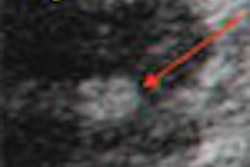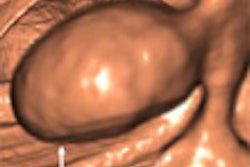AGRA - With about 2,000 in attendance at the 2005 annual congress of the Indian Radiological and Imaging Association (IRIA), radiologists from all over India and the world have the opportunity to meet and discuss the issues facing radiology today, including the status of conventional radiology and the relationship between radiologists and clinicians.
Dr Rajesh Gothi, a consultant radiologist at Dewan Chand Agarwal Memorial Hospital, launched into his congress presentation with the opening remarks, "Radiologists tend to forget that they are also doctors." He was reminding his fellow practitioners to examine the patient.
In another presentation, on social radiology, speakers like Dr M.P. Goyal and the session chairperson, 75-year-old radiologist Dr V.P. Lakhanpal, D.M.R.E., F.I.C.R., former head of the department of radiology at Amritsar Medical College, echoed these views.
"If a radiologist interacts more with both patient and radiographer, the results of this will be better films," Gothi said.
Gothi is among a vast majority of radiologists, not only in India but worldwide, who still swear by conventional radiology. He talked to many vendors at the equipment exhibition at the congress, and discovered a very interesting fact. In Japan, Fuji sales of film have dropped only marginally -- even in the land of electronics and technology, 50% of the radiologists had not switched to digital or computed radiography.
Goyal also discussed communication between radiologists and clinicians, and deplored the tendency to blame clinicians. "Even if they are wrong, don't show them up and give the practice a bad name," he advised.
Lakhanpal couldn't agree more with this statement. He encouraged open communication lines with both physicians and patients, as well as follow-up phone calls. In his own career, this has brought very smooth relations with his colleagues, he said.
Gothi and other speakers were also of the view that more needs to be done in geriatrics. Some of the common problems radiologists need to focus on include:
- Impacted fractures that may be overlooked
- Pathological factors
- Fore foot and ankle fractures
- The need for diabetes workup and follow-up
Dr Leanne L. Seeger, F.A.C.R., professor and chief of musculoskeletal imaging at David Geffen School of Medicine at the University of California, Los Angeles, reflected the same view about the possibilities of radiologists picking up diabetes from images, as demonstrated in his slides.
Another common recommendation was to repeat images of the opposite side in case the original examination showed a problem, especially in the legs and hands.
Finally, it would appear that calling for old files and old radiological reports will help ensure that "good job" is the final assessment.
By Ravi Damodaran
AuntMinnieIndia.com contributing writer
January 25, 2005
Copyright © 2005 AuntMinnie.com



















